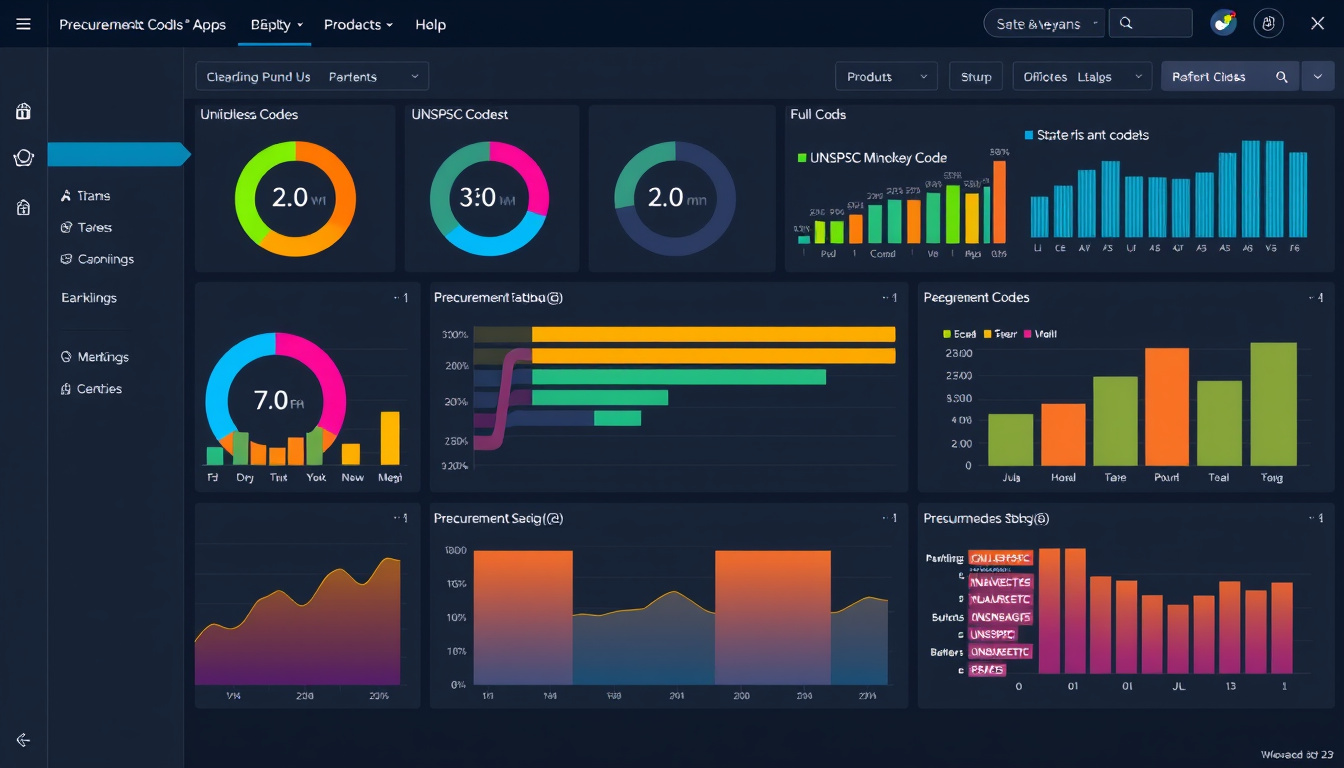In today’s fast-paced business environment, efficient procurement and inventory management are crucial for maintaining competitive advantage and operational excellence. One key tool that organizations leverage to achieve this is UNSPSC classification. UNSPSC classification provides a standardized system for categorizing products and services, enabling companies to streamline their procurement processes, improve spend visibility, and enhance inventory tracking accuracy. In this article, we’ll explore the fundamentals of UNSPSC classification and how mastering it can revolutionize your procurement and inventory management systems.
What Is UNSPSC Classification?
UNSPSC stands for the United Nations Standard Products and Services Code. It is an open, global classification system that categorizes both products and services into a hierarchical schema structured across four levels: Segment, Family, Class, and Commodity. Each level delves deeper into specific types of items or services.
By applying UNSPSC classification to purchases and inventory items, companies can achieve a universal language that facilitates better communication between suppliers, buyers, and internal departments. It helps organizations standardize descriptions, making it easier to manage catalogs, automate procurement workflows, and generate more insightful analytics.
Why UNSPSC Classification Matters in Procurement and Inventory Management
Implementing UNSPSC classification in your procurement system transforms how you acquire goods and manage your stock. Here are some significant benefits:
1. Enhanced Spend Analysis
When all procurement data is classified accurately using UNSPSC codes, businesses can gain a precise view of spending patterns. This visibility enables identifying cost-saving opportunities, supplier consolidation, and leakage prevention.
2. Improved Supplier Management
By assigning UNSPSC codes to products and services, procurement teams can segment suppliers by the type of goods provided. This aids in benchmarking supplier performance, negotiating contracts, and ensuring compliance.
3. Streamlined Inventory Control
Classifying inventory items with UNSPSC codes facilitates smoother stock tracking and management. Categorization according to global standards makes it easier to optimize stock levels, reduce overstock or stockouts, and expedite inventory audits.

4. Accelerated Purchase Order Processing
Standardized coding reduces ambiguity in product descriptions, minimizing errors in purchase orders. It also supports e-procurement systems by enabling automated matching of requisitions to supplier catalogs.
How to Master UNSPSC Classification
Mastering UNSPSC classification involves more than simply attaching a code to each product or service. It requires a comprehensive strategy and reliable tools to ensure accuracy and consistency. Follow these key steps:
Step 1: Understand Your Procurement and Inventory Categories
Begin by auditing your current product and service lists. Group these items logically to correspond with UNSPSC segments and families before drilling down to classes and commodities.
Step 2: Use Accurate Classification Tools
Manual classification can be time-consuming and prone to errors. Utilize advanced classification tools like Classifast.com, which offers instant UNSPSC classification by inputting text descriptions. This ensures fast, reliable, and consistent categorization aligned with international standards.
Step 3: Train Your Procurement and Inventory Teams
Educate your teams on the importance of UNSPSC classification and how to use tools and resources effectively. Consistency across all departments is vital for maintaining clean data.
Step 4: Integrate UNSPSC Codes into Your ERP and Procurement Software
Embed UNSPSC classification into your Enterprise Resource Planning (ERP) and purchasing platforms. This integration enables automated workflows, enhanced reporting, and seamless supplier communications.
Step 5: Regularly Review and Update Classifications
Procurement categories and products evolve over time. It’s essential to schedule periodic reviews to update UNSPSC codes, ensuring alignment with the latest standards and business needs.
Key Features of a Reliable UNSPSC Classification System
When selecting an approach or software for UNSPSC classification, consider these features:
- Comprehensive Coverage: Ability to classify a broad spectrum of products and services.
- International Standard Alignment: Codes up-to-date with global UNSPSC taxonomy.
- Ease of Use: User-friendly interfaces for rapid classification.
- Integration Capabilities: Seamless connection with ERP, inventory, and procurement systems.
- Accuracy and Consistency: High precision in classification to reduce human errors.
Using a dedicated service like Classifast.com offers access to accurate and up-to-date classification data across multiple international standards, including UNSPSC, NAICS, ISIC, and others. This versatility allows companies to harmonize classifications for global operations quickly.
Practical Example: Improving Procurement Efficiency with UNSPSC Codes
A multinational manufacturing company faced challenges in procurement due to inconsistent product descriptions and siloed supplier information. By implementing UNSPSC classification throughout its procurement and inventory systems—with the help of automated classification through Classifast—they achieved:
- A 30% reduction in procurement cycle times.
- Enhanced supplier segmentation for better negotiations.
- Improved accuracy in inventory replenishment, reducing stockouts by 20%.
This example underlines how mastering UNSPSC classification empowers businesses to optimize operational workflows and control costs effectively.
FAQ: Understanding UNSPSC Classification
Q1: What is the difference between UNSPSC classification and other product codes?
A1: UNSPSC classification is an open, hierarchical product and service categorization system focused on standardizing procurement descriptions globally. Other systems, like SKU or UPC, are often company-specific or used mainly for sales tracking.
Q2: How does automated classification with tools like Classifast improve UNSPSC code accuracy?
A2: Automated tools analyze text descriptions to assign the most appropriate UNSPSC codes, reducing manual errors, speeding up the process, and ensuring consistency across large data sets.
Q3: Can UNSPSC classification be used across different industries?
A3: Yes, UNSPSC codes cover a wide range of industries, making it suitable for organizations in manufacturing, services, government procurement, healthcare, and more.
Authoritative Insight on the Importance of Standard Classifications
According to the procurement experts at the Chartered Institute of Procurement & Supply (CIPS), utilizing standardized classification systems like UNSPSC is vital for enabling strategic sourcing initiatives, improving supplier relationship management, and driving cost efficiencies in purchasing activities (source: CIPS).
Conclusion: Take Control with UNSPSC Classification
Mastering UNSPSC classification is a strategic move that enables your business to streamline procurement workflows, sharpen inventory controls, and unlock deeper spending insights. With standardized and accurate classifications, you reduce operational complexity and build a foundation for smarter sourcing decisions and improved supplier collaboration.
To simplify this journey, leverage powerful classification tools such as Classifast.com, which provide instant and reliable UNSPSC codes from any product or service description. Don’t let inconsistent data hold back your procurement potential—embrace UNSPSC classification and transform how your organization manages purchasing and inventory today!
Click here to quickly find category codes from UNSPSC or from many other industry standards.


